[ad_1]
The most popular time to visit Cornwall is undoubtedly during the summer. The weather is perfect for sunbathing on the sand, enjoying the ocean, and exploring Cornwall’s fantastic coastal paths, fishing villages, and harbor towns, but the other seasons can be equally enjoyable.
I’ve been visiting Cornwall since childhood and have holidayed there in all the seasons. Each time of the year offers unique things to see and do from brisk winter walks and roaring pub fires to springtime flowers on the cliffs, summers at the beach, and autumnal walks in the fall.
If you want to avoid the crowds then the shoulder seasons of spring and fall are great (be sure to avoid the school half-term breaks). The weather is still pleasant and you’ll find the beaches and towns far quieter than at the height of summer.
When is the Best Time To Visit Cornwall?
Even though the summer can be crowded, there are so many wonderful beaches in Cornwall that it’s not difficult to find a little slice of solitude should you so wish. As this part of the country also sees average higher temperatures, summer is the best time to visit Cornwall.
Early summer (June is the best month to visit Cornwall) is less crowded and is one of my favorite times of the year to visit. Outside temperatures are warm, wildflowers are out in abundance on the cliffs, and the towns are not as busy. What’s more, prices are also cheaper at this time.
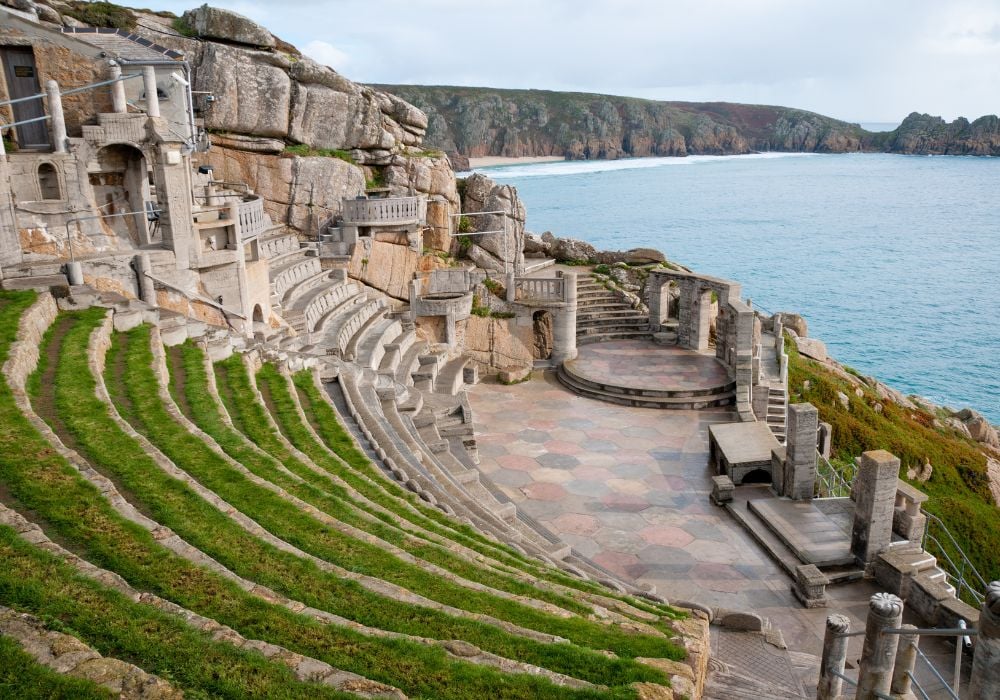
The only slight problem with the early summer is that the sea can still be a little cold, however, you can hire a wetsuit if you plan to spend lots of time in the water (even at the peak of summer, the water around the UK never reaches very high temperatures).
Peak Season in Cornwall (July – August)
The peak vacation season in Cornwall is during the school summer holiday from July until the end of August. This is also the busiest time when the beaches can become crowded and small villages are overrun with tourists.
However, the weather is perfect (usually – this is England after all) and these months are a great time for camping, music festivals, hiking, and hitting the beautiful beaches. The nightlife in towns like Newquay and Falmouth can get a little crazy too, so if you like to party this is an excellent time of year to visit.
There are some great festivals in Cornwall during the peak season from the world-famous Boardmasters surfing competition to the Fowey Regatta, Rock Oyster Festival, Leopallooza, and more. Be aware that accommodation can sell out fast, so if you plan to visit in the summer book well in advance.
Shoulder Season in Cornwall (March – May, September – October)
The shoulder seasons are some of the best times to travel to Cornwall thanks to the mild weather, cheaper prices, and fewer people (provided you avoid the school half-term holidays).
This is the time of year when locals enjoy Cornwall’s beaches and towns without so many tourists. There are some great festivals during the fall with food and drink dominating.
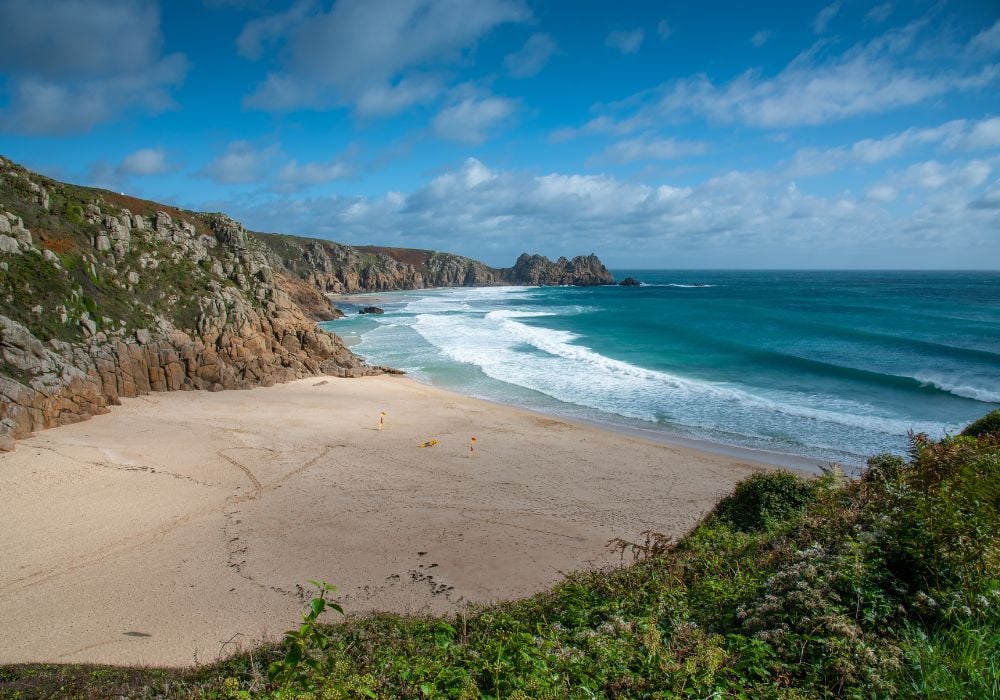
The Little Orchard Cider Festival takes place in September and celebrates one of Cornwall’s favorite tipples as the apples come into season.
Off-Season in Cornwall (November – February)
If you really want to avoid the crowds and have Cornwall almost to yourself (other than the odd locals) then the winter off-season is the best time of year to visit Cornwall. For pro surfers, this is a fantastic time to go to make the most of the huge swells and empty beaches.
Winter is also a great time to wrap up warm and hit some of Cornwall’s gorgeous hiking trails such as the southwest coast path. Be sure to pack good walking boots or wellies for the muddy fields.
One of my favorite things to do in Cornwall in winter is to go hiking and then find a nice pub to warm up in front of a roaring fire with a glass of something tasty and a hearty meal.
When to Visit Cornwall For Beaches
June to August is the best time to visit Cornwall for its idyllic beaches. This is also the best time for families as many of the most popular beaches and surfing beaches are patrolled by lifeguards.
The weather in Cornwall in summer is fantastic and the county sees higher average temperatures than the rest of the UK. The Scilly Isles which form part of Cornwall are actually the hottest part of the UK, and these gorgeous and unspoiled islands are definitely worth a visit.
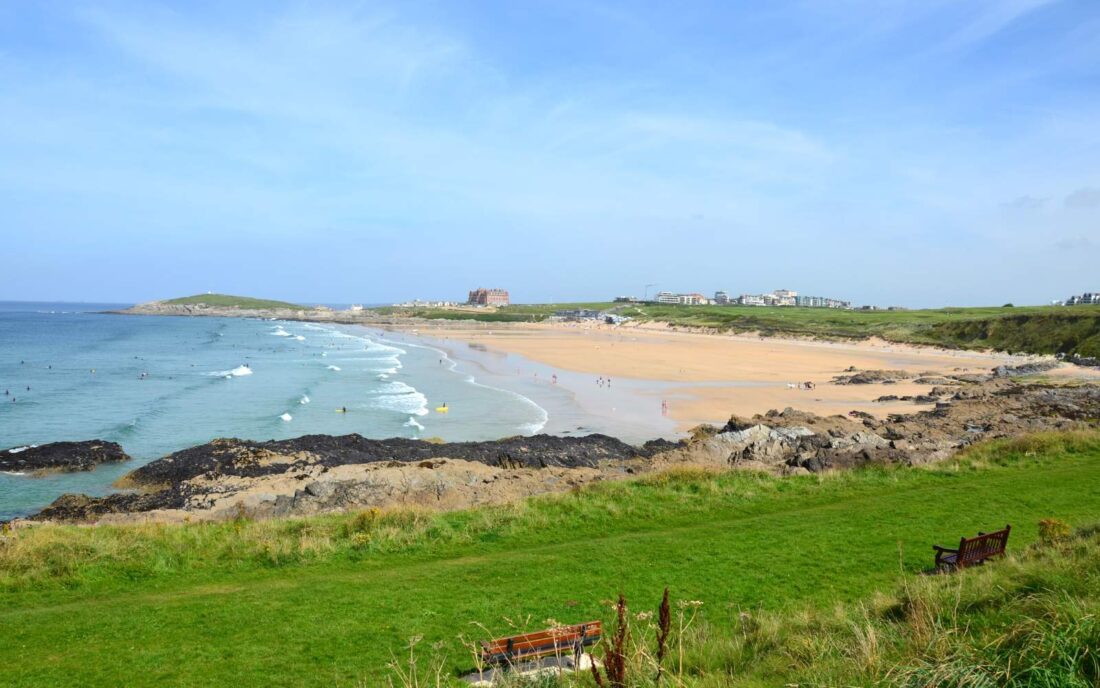
Newquay is one of the most popular beach destinations as there are eleven beaches in and around the town. Polzeath, Bude, Penzance, and Falmouth also have some great stretches of sand for the perfect beach holiday.
When to Visit Cornwall For Festivals
Summer is also one of the best times to visit Cornwall for festivals as the weather is perfect for camping. I’ve camped in Cornwall at various times of the year and summer is definitely the best time to enjoy living under canvas.
Cornwall is host to many different events throughout the year from surf competitions to music festivals, food and drinks events, and even a sea shanty festival.
Top festivals include Boardmasters Newquay, Leopallooza near Bude, the Eden Sessions at the Eden Project, and the Rock Oyster Festival near Padstow.
When to Visit Cornwall For Cities
Despite its status as a top vacation destination, Cornwall is still a very rural place with only one city in the county – Truro, and even then it’s the size of a small town with a population of just 21,000 people. What’s really special about Cornwall is its beautiful harbor towns and fishing villages.
Boscastle, Padstow, Port Isaac, Tintagel, and Penzance are all excellent destinations to explore, and the shoulder seasons of spring and fall are the best times to visit these gems.
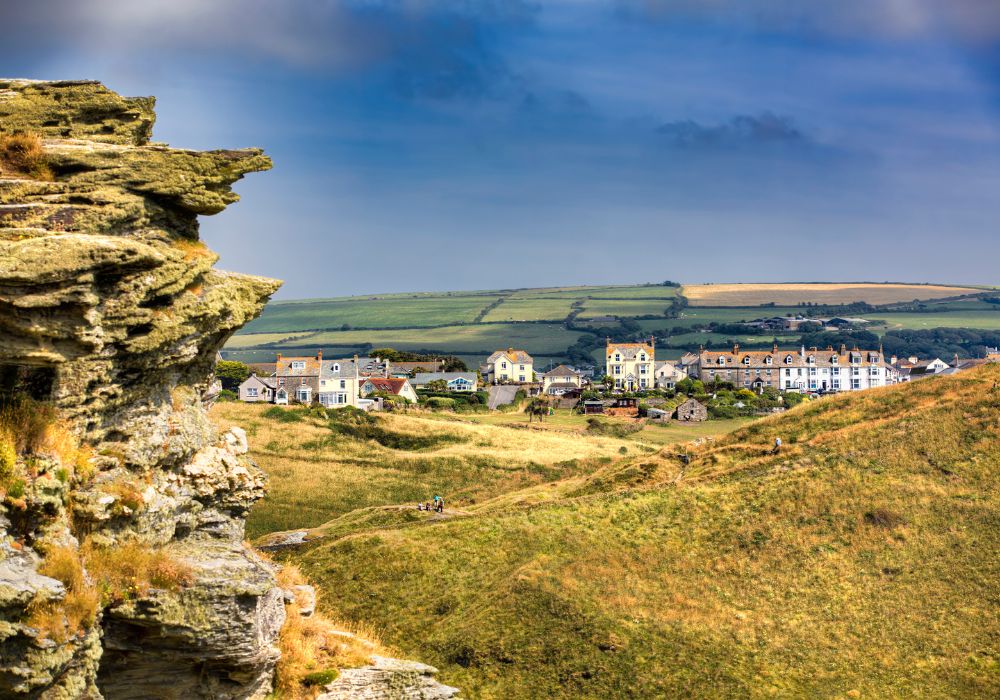
Visiting the towns and villages during the shoulder seasons means you won’t have to fight for parking spaces, restaurant tables, and accommodation, and prices are lower than in the summer season.
When to Visit Cornwall For Historical Sites
As many of the historical sites close for the winter, the summer and shoulder seasons are the best times to visit and explore Cornwall’s castles, stately homes, and historical sites.
Some of the unmissable attractions, and my favorites, include Tintagel Castle on the north coast and St Michael’s Mount and Pendennis Castle on the south coast.
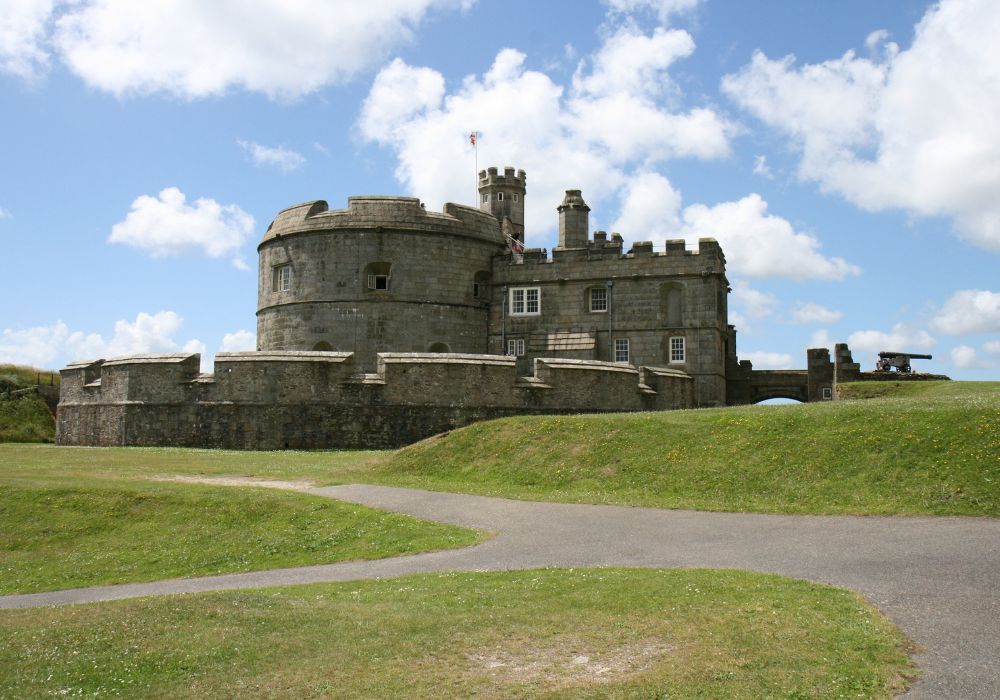
These castles are steeped in myth and legend from King Arthur to Henry VIII and are must-visit spots for history lovers like me.
When to Visit Cornwall For Whale Watching
Whales have been seen in the waters around Cornwall at all times of the year, however, April to September is generally the best time to be in with a chance of spotting these magnificent creatures (and you’ll be blessed with the best weather too).
Taking a sealife safari is the best way to go whale watching and search for other marine life such as seals, dolphins, and basking sharks. It’s also possible to see the wildlife from the beach and clifftop paths (I’ve seen a basking shark from the cliffs up around Polzeath before!).
When to Visit Cornwall For Cheap Prices
Winter is the cheapest time of year to visit Cornwall, but you’ll find that many of the attractions, restaurants, and resorts close for the winter season. There’s still plenty to do from braving the cold for a winter swim or surf to coastal walks and enjoying Cornwall’s rural pubs.
In winter, many of the hotels have special deals with rooms from £50 to £99 which is a huge saving of up to 100% and more compared to the summer months.
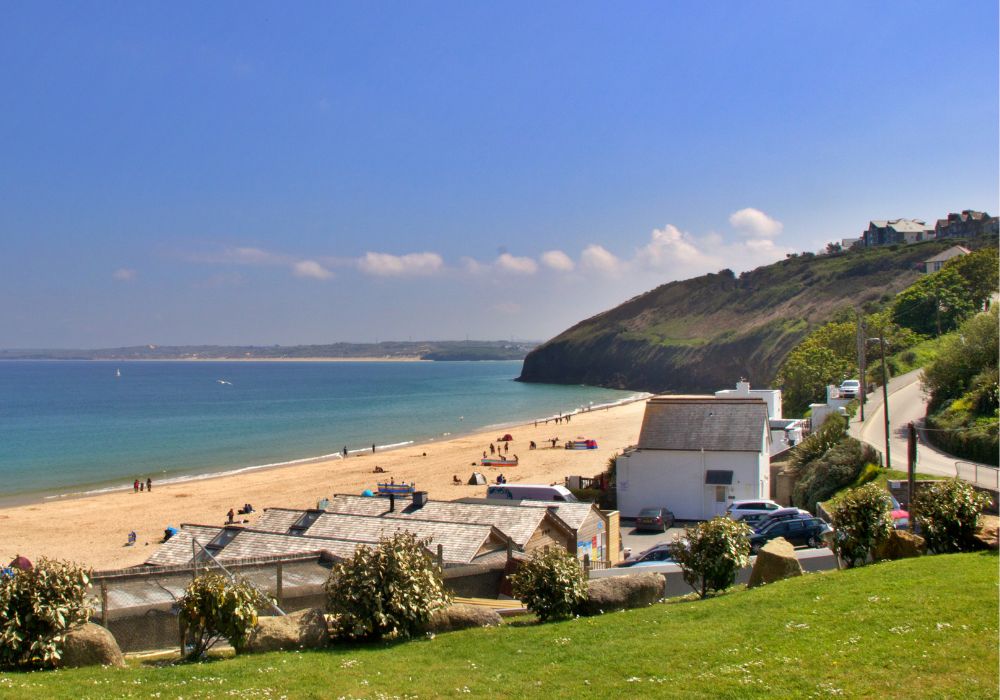
Many of the car parks are free in winter and some of the Cornwall attractions offer discounted entry prices.
When to Visit Cornwall For Hiking
Hiking in Cornwall is fantastic year-round and I’ve hiked the trails, byways, and footpaths at all times of the year. Spring to fall is a perfect time as you’ll likely have blue skies and warm/mild weather.
The only potential downside is that you’ll be sharing the more popular trails with many other people. Winter is also a great time for hiking in Cornwall as you’ll likely have the paths to yourself.
Wrap up warm, stick on some wellies and blow the cobwebs away on the county’s gorgeous coast paths. You can warm up after your trek in front of a roaring fire in one of Cornwall’s many rustic pubs and inns.
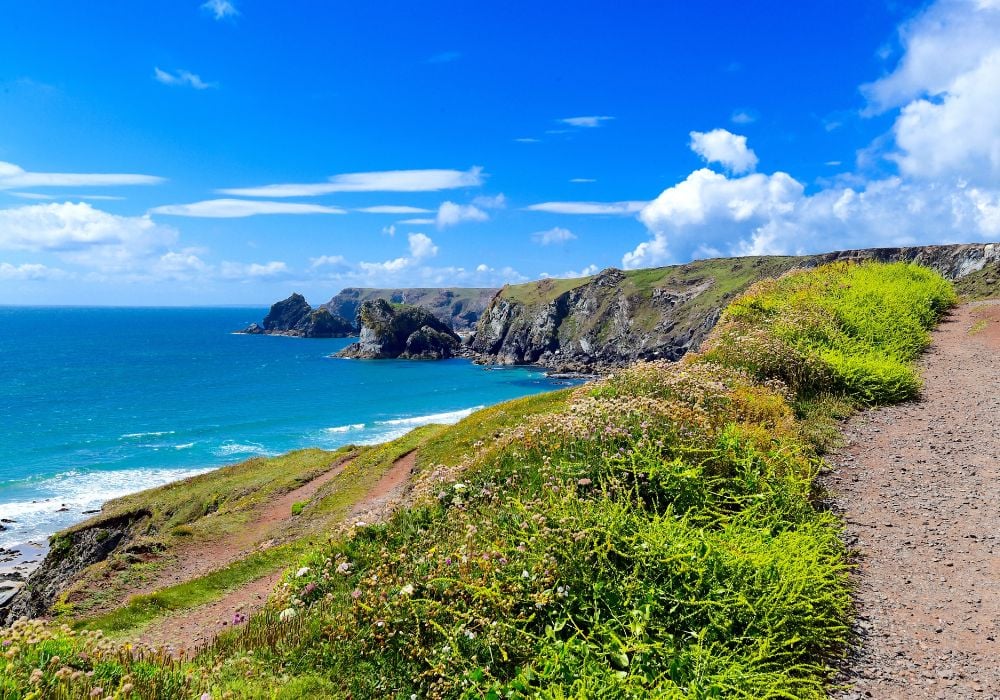
Top hikes in Cornwall include the southwest coast path and Bodmin Moor. If you’re looking for something a little less strenuous then the Camel Trail or Bude Canal Walk are also great options.
Best Time to Visit Cornwall By Month
Below is a breakdown of the weather and some of the best activities in Cornwall by month. From winter walks to summer festivals, springtime flowers, and fall foliage, there’,s something beautiful about Cornwall at all times of the year.
Discover how to beat the crowds, find the best prices and enjoy the longest hours of sunshine by choosing the right month to visit based on the criteria below. Having visited Cornwall at all possible times of the year, I’ve included the highlights for each month.
Cornwall in January
January is the perfect time to visit Cornwall to avoid the crowds, enjoy the lowest prices and take in the fresh, crisp sea air.
Weather in Cornwall in January
Average temperatures in January range between 39 and 46 degrees Fahrenheit, and the sea temperature is around 50 degrees. The county sees 110mm of rainfall over 25 days making it one of the wettest months of the year.
The south coast is a lot more sheltered than the north which sees the brunt of Atlantic storms, so exploring southern Cornwall in January is the best option to avoid the worst of the weather (though there is something magical about watching the huge waves come crashing in on the north coast).
Things To Do in Cornwall in January
January is a great month to visit Cornwall’s museums such as the National Maritim Museum in Falmouth, the tropical indoor gardens at the Eden Project, and the art galleries of St Ives.
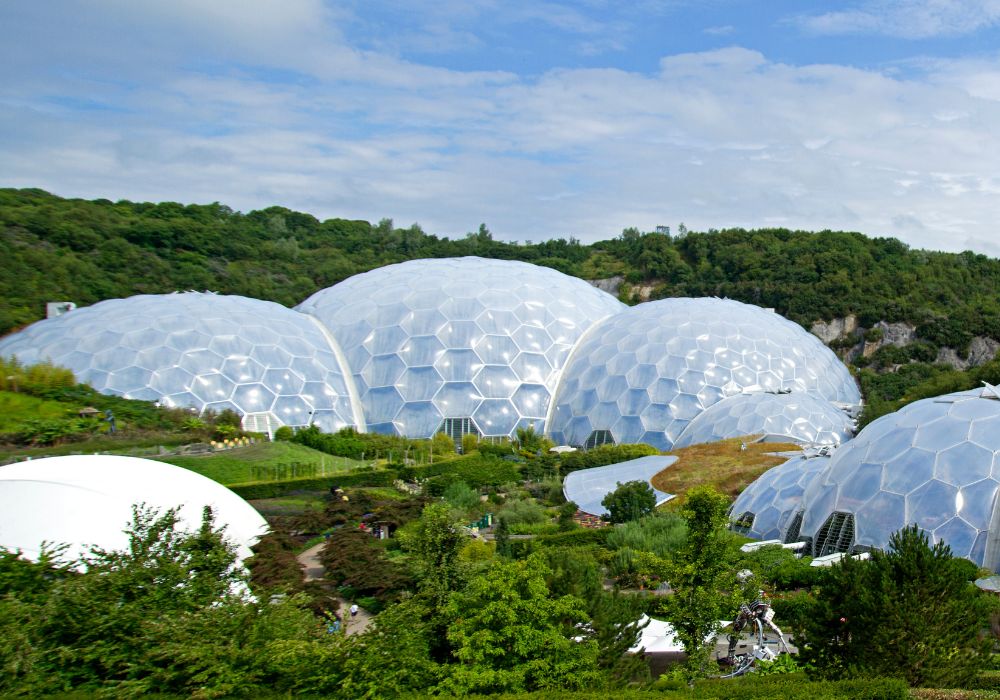
For hardcore surfers, this is a great time to catch some massive waves and not have to worry about crowded breaks and beaches.
Cornwall in February
February is the coldest month in Cornwall but thankfully not as wet as January; opening up more possibilities for being outside.
Weather in Cornwall in February
Average temperatures in January range between 37 and 46 degrees Fahrenheit, and the sea temperature is around 48 degrees. The county sees 90mm of rainfall over 21 days meaning you’ll still want to pack waterproofs.
As with January, stick to the south coast and inland areas if you want to avoid the worst of the winter weather.
Things To Do in Cornwall in February
The month of February is also a great time for hiking and exploring the county’s many traditional pubs and cozy restaurants. It’s also a great time to explore some of the picturesque fishing villages such as Port Isaac (my favorite), Fowey, and St Mawes.
Museums such as the Museum of Witchcraft and Magic in picturesque Boscastle and King Arthur’s Great Halls in Tintagel are ideal for rainy days in Cornwall.
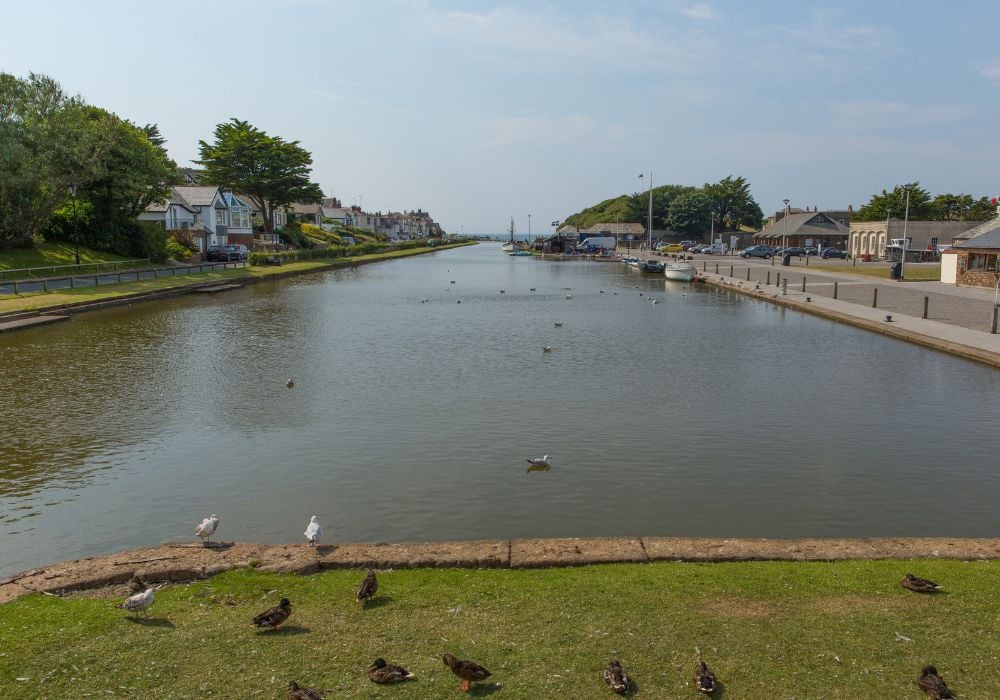
It’s also a good time to explore some of the larger towns such as Bude, Padstow, and Falmouth as they have plenty of indoor and outdoor attractions.
Cornwall in March
With spring just around the corner, Cornwall in March opens up more opportunities for enjoying the great outdoors without the crowds.
Weather in Cornwall in March
Average temperatures in March range from 41 to 48 degrees Fahrenheit, and the sea temperature is around 48 degrees. Cornwall sees 100mm of rainfall over 22 days so you can still expect a few downpours between sunny spells.
You can expect four hours of sunshine each day (double that of January), so there’s time to get out and about to enjoy Cornwall’s beautiful countryside and coast paths (I still advise you to bring your wellies).
Things To Do in Cornwall in March
March is a great month for dog walking as the beach bans haven’t yet come into effect. From the many amazing Newquay beaches to those around the south coast, you’ll likely have Cornwall’s golden stretches of sand to yourself.
March 5th sees the celebration of St Piran, the patron saint of miners, and is Cornwall’s national day. There are celebrations across Cornwall from street parties and dances to arts events.
Be sure to head to one of Cornwall’s pubs in the evening to hear the Trelawny shout at 9:00 pm when local songs are sung.
Cornwall in April
April is when the clifftops are awash with the bright colors of sea campion and spring squill, and the gardens and parks “spring” into life.
Weather in Cornwall in April
Average temperatures in April range from 41 to 52 degrees Fahrenheit, and the sea temperature is around 50 degrees. Cornwall sees 60mm of rainfall over 20 days so as with March, you can still expect the odd downpour.
Inland temperatures are a degree or so higher than along the coast and there’s also less wind away from the north Atlantic.
Things To Do in Cornwall in April
April is a fantastic time to be in Cornwall as the flowers attract returning migratory birds and the coast is teaming with sea life. The coast paths and tracks are less muddy and the small towns and villages pick up gear ready for the tourists.
April is a great time to have a go at surfing as the waves are still bigger than in the mild summer months. Coasteering is another great springtime activity as it doesn’t really matter how the weather is when you’ll be getting wet anyway.
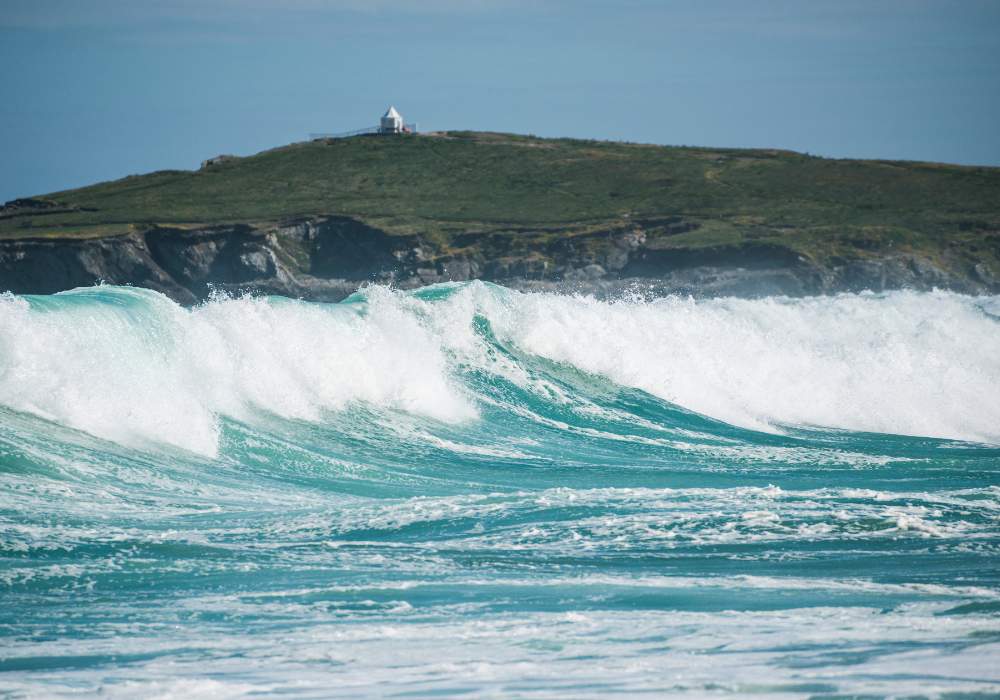
There are lots of fun festivals in April such as the Porthleven Food Festival, the adult-only Rattler Fest at Healey’s Cyder Farm, and the St Agnes Bolster Festival which celebrates Cornwall’s rich musical heritage.
Cornwall in May
May is when things really start to pick up in Cornwall and visitors begin to explore the villages and coast as winter becomes a distant memory.
Weather in Cornwall in May
The average temperatures in May range from 46 to 57 degrees Fahrenheit, and the sea temperature is around 52 degrees. The county sees 60mm of rainfall over 18 days. You can expect seven hours of sunshine during the day – perfect for exploring Cornwall’s beautiful countryside and catching some rays.
Things To Do in Cornwall in May
There will be days in May perfect for the beach, surfing, walking, and discovering the towns and villages. The wildflowers are out in abundance along the southwest coast path, and it’s the perfect time to attempt a good hike like the trail between Port Isaac and Polzeath.
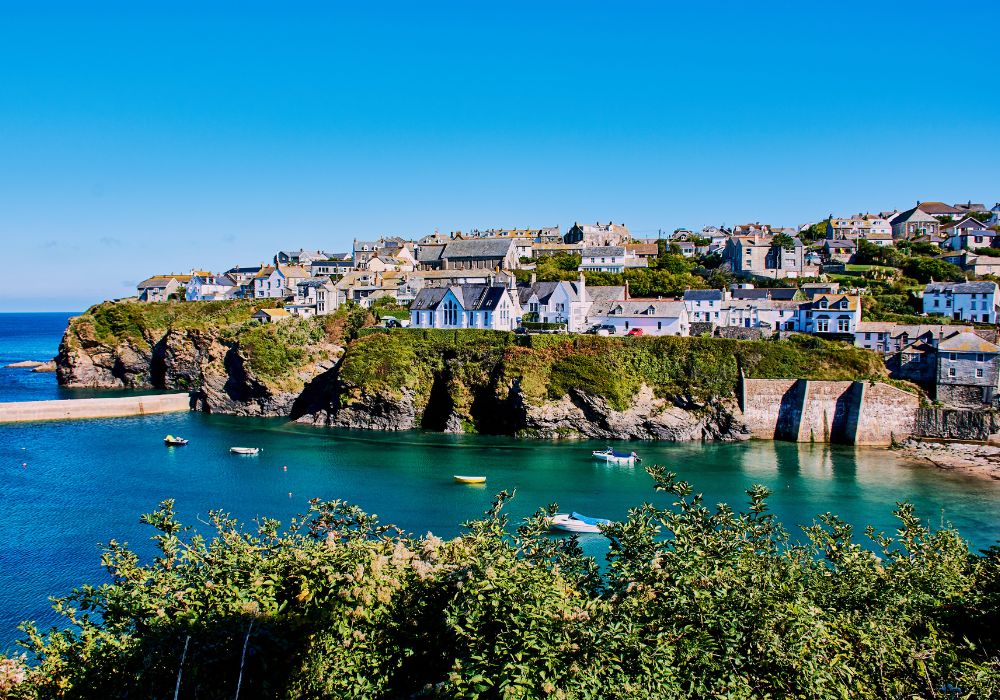
There’s lots going on in Cornwall in May such as the St Ives Food and Drink Festival and the Enys Gardens Bluebell Festival (in May the woodlands are a sea of blue).
Cornwall in June
June is the best time to visit Cornwall as the weather is pleasant, with warm, sunny days perfect for the beach before the crowds of July and August.
Weather in Cornwall in June
Average temperatures in June range from 52 to 61 degrees Fahrenheit, and the sea temperature is around 55 degrees. Cornwall sees 70mm of rainfall over 19 days.
You can enjoy seven hours of sunshine each day during the month so there’s plenty of time to be out and about enjoying the fine weather.
Things To Do in Cornwall in June
There’s so much to do in Cornwall in June. Head to the beaches for surfing, swimming, kayaking, and sunbathing. It’s a great time for walking, hiking, cycling, and exploring the castles and villages.
If you want to learn more about Cornish heritage, head to the Cornish Sea Shanty Festival in Falmouth which happens every June (yo, ho, ho, and a bottle of rum).
The Great Estate Festival hosts a weekend of music, food, and drink at Scorrier House near Redruth and is an excellent option for the whole family.
Cornwall in July
July is a fantastic month to visit Cornwall (tip: to avoid the crowds, visit during the first two weeks of July) with some of the best weather of the year.
Weather in Cornwall in July
Average temperatures in July range from 55 to 66 degrees Fahrenheit, and the sea temperature is around 61 degrees. Cornwall sees 60mm of rainfall over 20 days. You can enjoy seven hours of sunshine each day during the month.
Things To Do in Cornwall in July
The beach is the place to be in July. With over 300 beaches across 250 miles of coastline, even with the crowds, it’s not hard to find your own stretch of sun, sea, and sand.
Polzeath’s large beach is my go-to for surfing and swimming, (and hiking), but if you want a bit more action, then head to Newquay, where you’ll also find lots of cool bars to check out after a day at the coast.
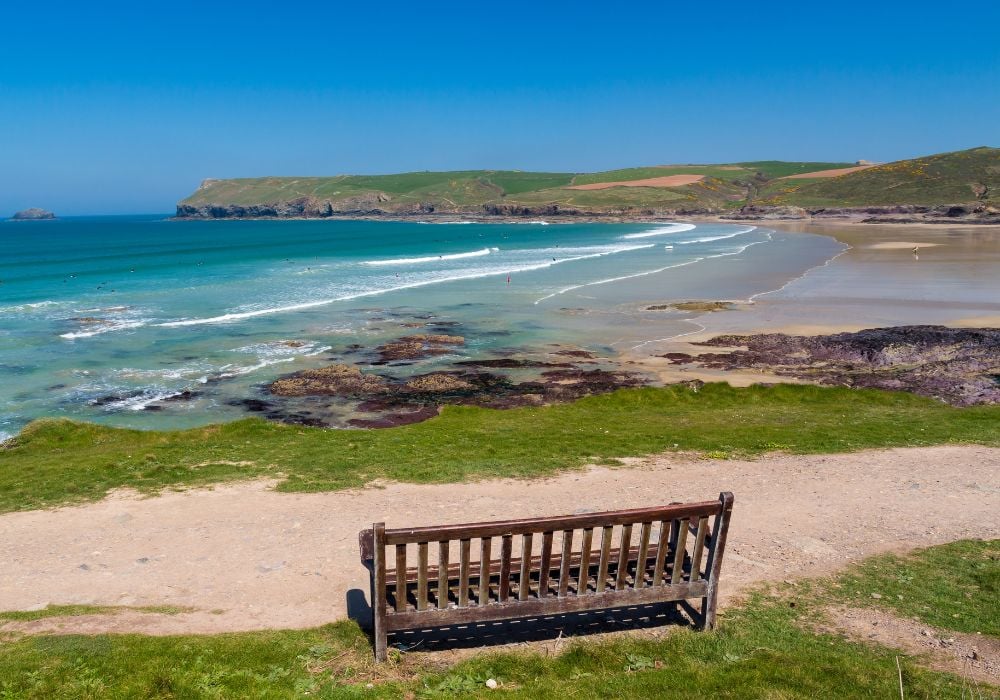
July in Cornwall sees some excellent festivals such as Leopallooza (the greatest house party, in a field) where you can catch over 100 awesome acts from chart-topping bands to top DJs and more.
The Rock Oyster Fest is held in the small village of Rock across the water from Padstow. This food and music festival plays host to top names from Sophie Ellis Bexter to celebrity chef Rick Stein (who has put Cornwall on the map for foodies).
Cornwall in August
August is when Cornwall comes into its own as one of the top vacation destinations in the UK and the best time to enjoy the sun, sea, and surf.
Weather in Cornwall in August
Average temperatures in August range from 55 to 66 degrees Fahrenheit, and the sea temperature is around 63 degrees. Cornwall receives 60mm of rainfall over 21 days. You can enjoy seven hours of sunshine each day during the month.
August sees the highest outside and sea temperatures of the year (though you’ll still need a wetsuit if you plan on spending hours in the water). It’s cooler by the coast with the sea breeze, especially in the north of Cornwall.
Things To Do in Cornwall in August
There’s no excuse not to hit the water in August as the sea is the warmest it gets all year. Boardmasters in Newquay is a huge five-day festival celebrating Cornwall’s long association with surfing and a weekend of entertainment from surf lessons to camping, food, and music.
Head to the beaches around Newquay, Bude, and St Ives for some excellent surfing, or if you want to swim in more protected waters, head to the south coast and discover the areas around Penzance, Lizard, Fowey, and Looe.
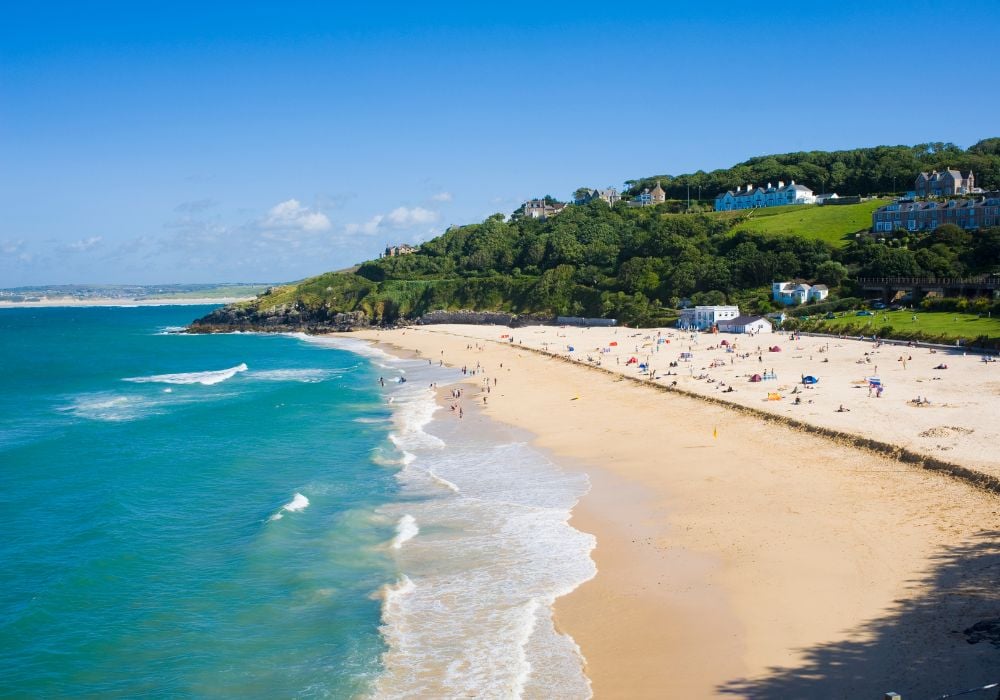
If surfing isn’t your bag (you really should give it a go though), and are looking for something a little more laid back then head to the Fowey Regatta which is the perfect family experience where you can watch the sailboats, try some crabbing, and enjoy carnivals and fireworks.
August is a great time to take in a show at the amazing Minack Theatre on the cliffs above the ocean near Porthcurno. Here, you can watch a performance under the stars with the waves crashing around you below; truly an unforgettable experience.
Cornwall in September
Cornwall takes on a whole new hue in September as the crowds disperse and the coastline is bathed in a gorgeous soft light with incredible sunsets. The coastal paths are exceptional at this time of year and the Camel Estuary around Daymer Bay is perfect for evening walks.
Weather in Cornwall in September
Average temperatures in September range from 54 to 63 degrees Fahrenheit, and the sea temperature is around 61 degrees. Cornwall sees 70mm of rainfall over 19 days. You can enjoy five hours of sunshine each day during the month.
Things To Do in Cornwall in September
September is another of my favorite times to visit Cornwall. The sea is still warm, the kids have gone back to school, and things wind down a gear with the towns and villages emptying of summer tourists.
It’s a great time to be outside still and enjoy the beaches, coast paths, and al-fresco dining at the many beach bars, cozy cafes, and restaurants across the county. Towns and villages like Polperro and Perranporth make great fall destinations.
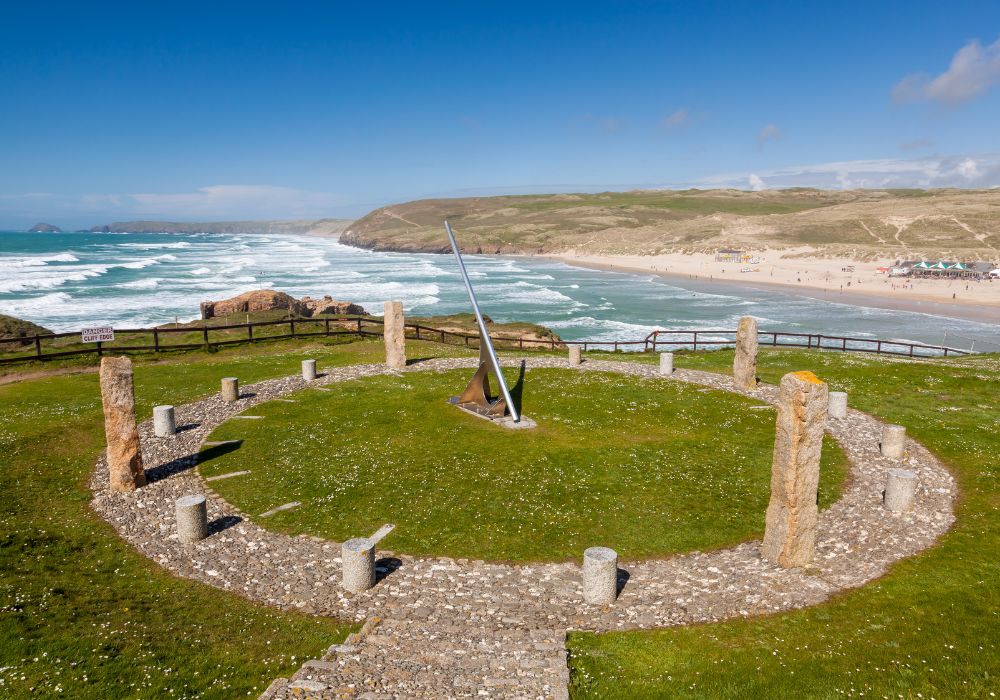
The two-week-long St Ives Festival kicks off in September each year and hosts a range of cultural events and workshops centered around the arts, food, and drink.
September is also the month when the year’s crop of apples is ready for the latest batch of cider. You can sample this classic Cornish tipple at the Little Orchard Cider and Music Festival at Healey’s Cider Farm near Truro (highly recommended).
Cornwall in October
October is a wet and windy month in Cornwall, but a great time to visit the museums and perfect for sitting in one of the clifftop pubs overlooking the crashing waves.
Weather in Cornwall in October
Average temperatures in October range from 50 to 57 degrees Fahrenheit, and the sea temperature is around 57 degrees. Cornwall sees 110mm of rainfall over 23 days. You can enjoy four hours of sunshine each day during the month.
Things To Do in Cornwall in October
There’s still plenty to do in Cornwall in October from exploring the empty beaches to hiking the footpaths and byways that crisscross the county.
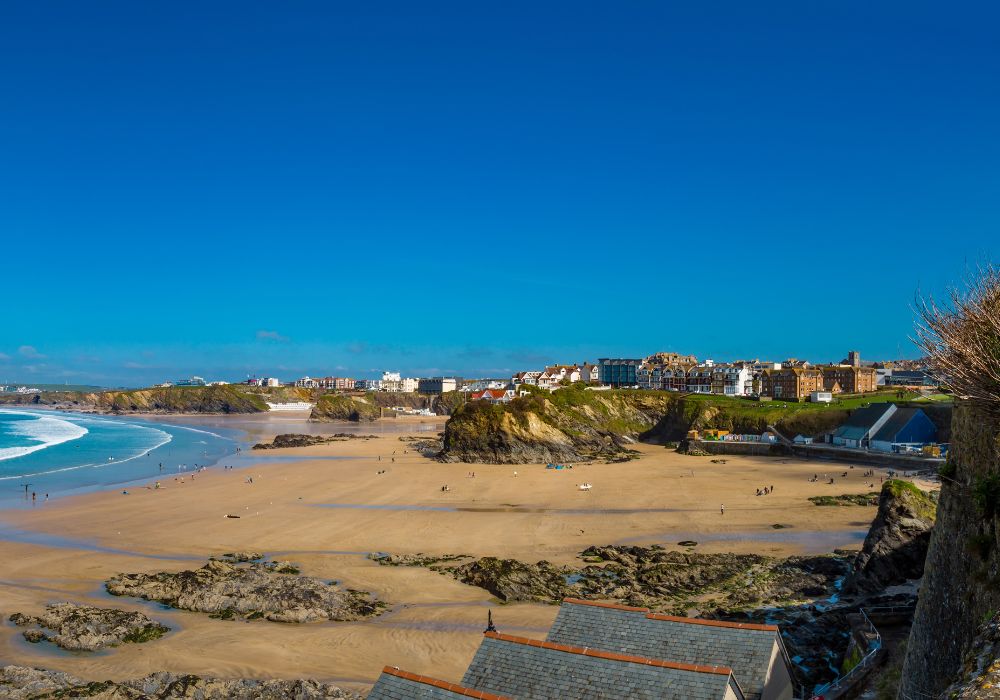
This is also a wonderful time to enjoy Cornwall’s pubs and restaurants.
Cornwall in November
November is when the winter really hits Cornwall and the crowds have completely disappeared, prices are slashed and the streets empty of vacationers.
Weather in Cornwall in November
Average temperatures in November range from 45 to 52 degrees Fahrenheit, and the sea temperature is around 54 degrees. Cornwall sees 100mm of rainfall over 25 days. You can enjoy four hours of sunshine each day during the month.
November sees the highest number of rainy days in a month and this is the time of year when the north coast especially can be battered by winter storms.
Things To Do in Cornwall in November
Bodmin Moor takes on a distinctly spooky atmosphere in winter, so what better time to check out Bodmin’s old prison? The one-time jail is now both a visitor attraction and also a hotel.

If you’re feeling brave enough you can spend the night (just be sure they “release” you!).
Cornwall in December
Cornwall is a magical place in December as the region gears up for Christmas celebrations with the towns and villages decked out in lights and decorations.
Weather in Cornwall in December
Average temperatures in December range from 43 to 48 degrees Fahrenheit, and the sea temperature is around 52 degrees. Cornwall sees 120mm of rainfall over 23 days. You’ll have just two hours of sunshine each day during the month.
December is the wettest month in terms of rainfall so you’ll want to line up plenty of indoor activities – unless you don’t mind the rain of course.
Things To Do in Cornwall in December
Christmas in Cornwall is a great time to visit with many pubs and restaurants serving a full Christmas dinner. The Working Boat in Falmouth is a great option for this with a three-course Christmas lunch from £65.00 per person (£35.00 for children).
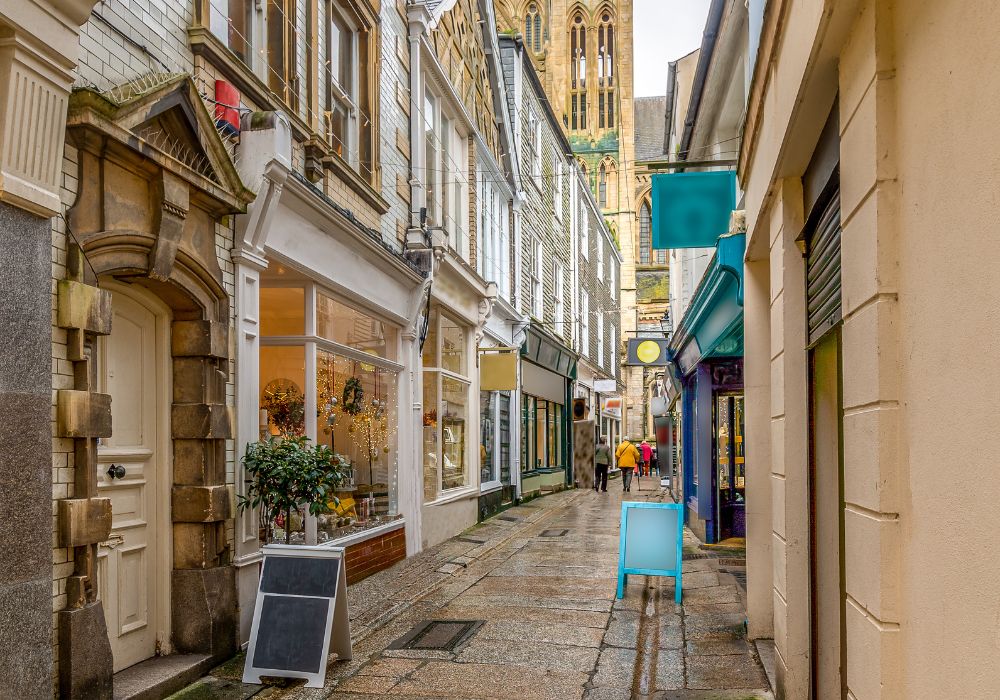
Shops in the towns and cities will open for late-night shopping in the run-up to Christmas and you can enjoy complimentary hot, mulled wine and mince pies in many places. The larger towns like Truro, Falmouth, Bude, and Newquay are great for this.
In Conclusion
Now you know when to travel to Cornwall to get the best out of your trip. It doesn’t matter what time of year you visit, there are so many wonderful things to do around Cornwall both indoors and outdoors. From summer surfing to winter walks, museums and pubs you’ll not be bored for a second.
Whether you want to dance all night at one of Cornwall’s happening festivals, try local food and drink, or explore the beautiful countryside, coastline, towns, and villages, choosing the best time to go to Cornwall should be easy now.
Like This Article? Pin it!



The post Best Time to Visit Cornwall (Weather and Costs) appeared first on Goats On The Road.
[ad_2]
Source link

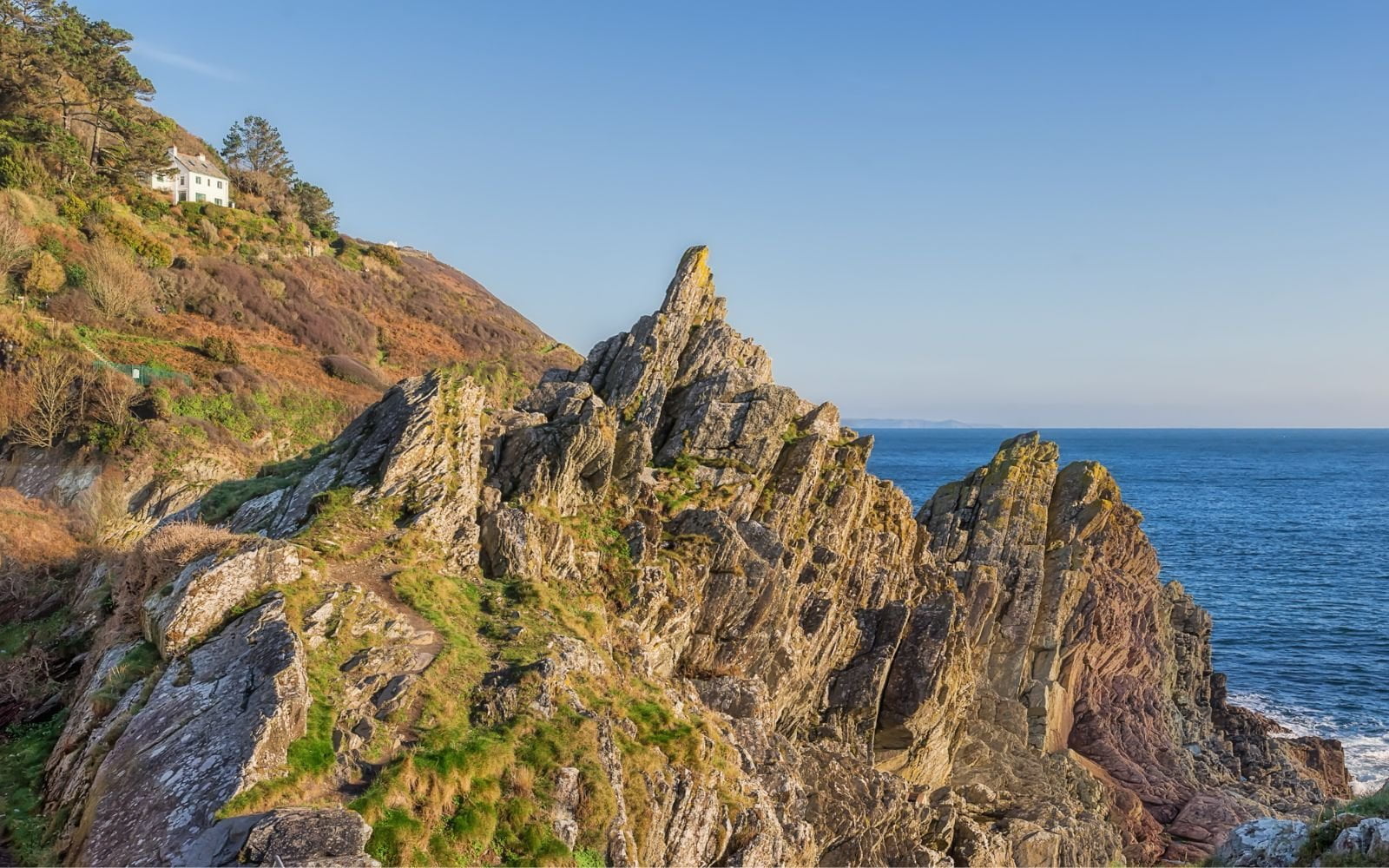

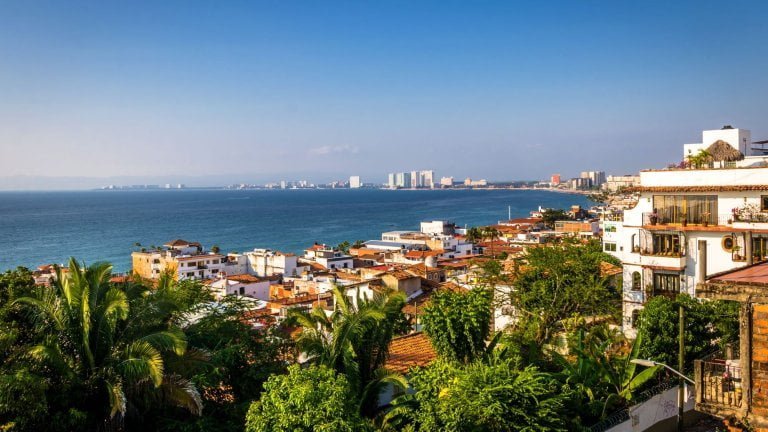
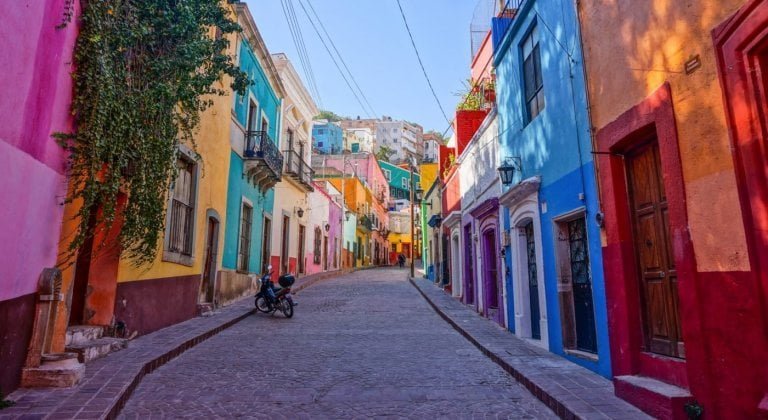
+ There are no comments
Add yours